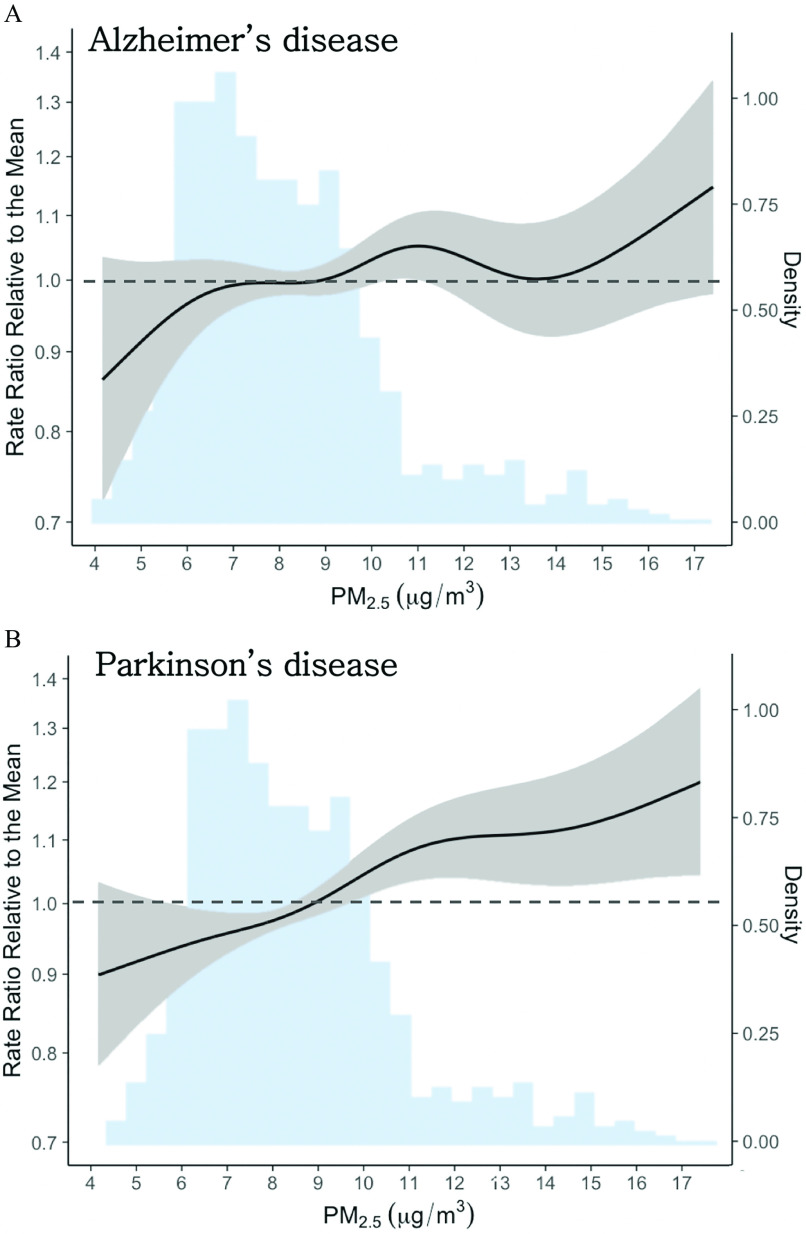Figure 2.
Nonlinear association between 1-y exposure to and first hospitalization for (A) Alzheimer’s disease (AD) and (B) Parkinson’s disease (PD) in New York State (2000–2014). The solid black lines are the exposure–response curves, as rate ratios relative to the mean concentration (), and gray shaded areas are the 95% confidence bands—both correspond to the left y-axis. The blue shaded area in both plots is the density histogram for concentrations (right y-axis). Sample sizes: , . Note: , particulate matter in aerodynamic diameter (fine particulate matter).

